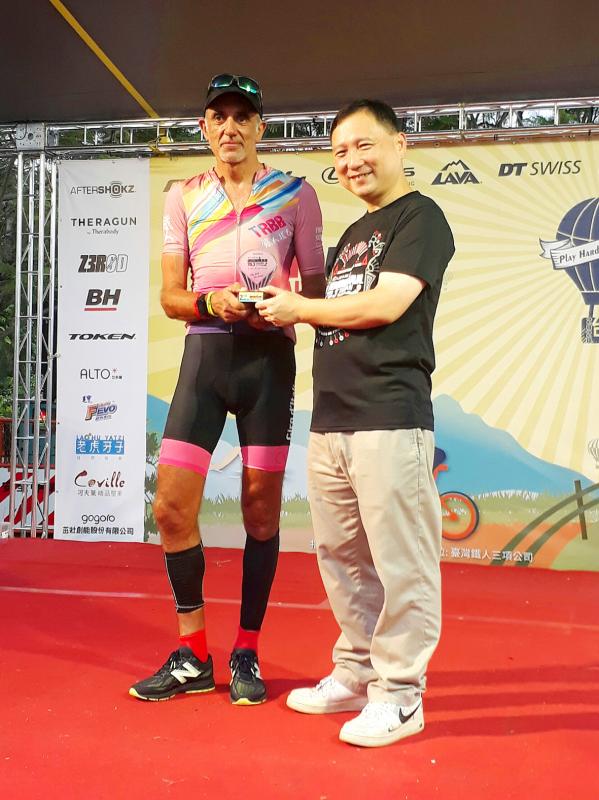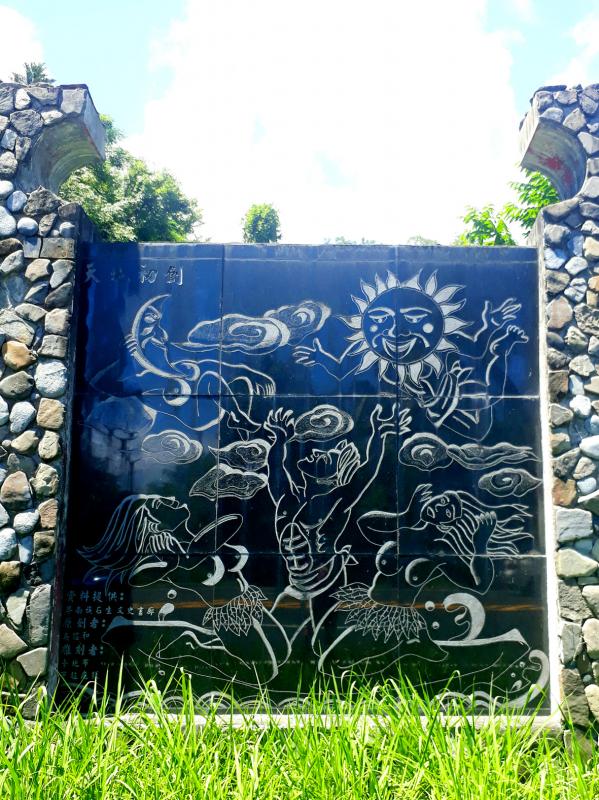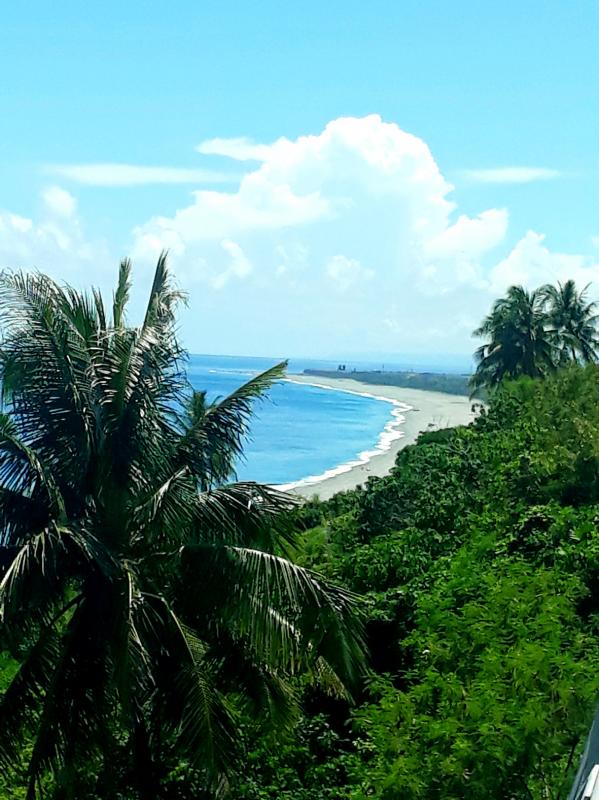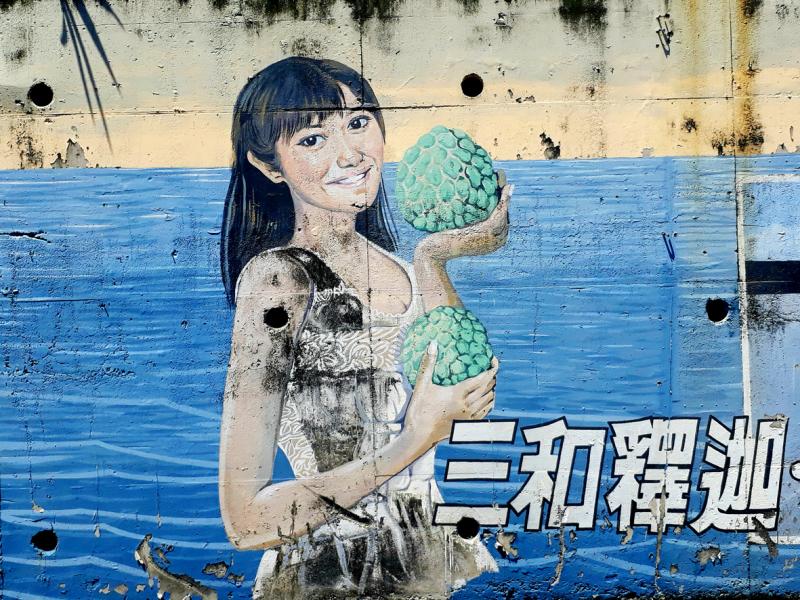Let’s get one thing straight: I have never liked the name Ironman.
Maybe it sounded good in 1970s Hawaii when endorphin-fueled athletes with military backgrounds argued who were fitter, swimmers or runners. Or perhaps cyclists, someone else had chimed in.
There was only one way to settle it: They would combine the 2.4 mile (3.9km) Waikiki Roughwater Swim with 112 miles (180km) of the Around-Oahu Bike Race and the 26.2 mile (42.2km) Honolulu Marathon into a single one-day event. Whoever won would be known as the Iron Man.

Photo: Mark Caltonhill
That I don’t like the name doesn’t stop me from participating, however. Nor from attempting to qualify for the Ironman World Championships held annually in Hawaii since 1977. Unfortunately both this and Taiwan’s qualifying event for this year were canceled due to the coronavirus pandemic, but the 70.3 mile (113km) Half Ironman event would go ahead on Sunday.
All I had to do was win my age category and I could attend the 70.3 world championship in Utah in 12 months’ time.
SEPT. 2

Photo: Mark Caltonhill
It’s probably about time I start tapering, so I message Canadian Darren Cole. He’s been to the Hawaii worlds three times, so should have some useful advice.
“Sleep, nutrition and stress management,” he lists as the fundamentals of pre-race preparation.
“Last-minute training is self-defeating,” he says, recommending short, easy activities.

Photo: Mark Caltonhill
My problem is weight, which can go up by a couple of kilograms when tapering for an event, so I will compromise and ride around 50km per day, but without many hills.
SEPT. 7
I haven’t competed in any kind of triathlon for about 6 years, so am glad to find my wetsuit isn’t moth-eaten. I take it to Bitan and swim among the swan-headed pedalos.

Photo: Mark Caltonhill
On the way home I ask a bike shop mechanic to swap my alloy wheels for the 600g-lighter carbon wheelset. This necessitates a change of brake pads too, which, with a new derailleur cable and check up, costs me NT$1,500.
Not for nothing triathlon is nicknamed the CEO sport. While marathons cost little to enter and can be done in your old sneakers, an Ironman costs over NT$10,000, and, if you have dreams of winning your age group, cannot really be done on any old bike.
With my usual race bike separated from me by two 14-day quarantine periods back in the UK, I recently bought a secondhand time-trial bike on the Internet, but even this cost NT$30,000.

Photo: Mark Caltonhill
SEPT. 12
All this equipment makes for complicated logistics too, and carrying my swimming, cycling and running gear to Songshan Station, disaster strikes as I jigger something in my back. My bad luck continues when the soles of my running shoes, which have also spent two years in the closet, separate themselves from the uppers.
SEPT. 13
I can hardly tie my shoelaces. No doubt professional athletes have injectable substances to deal with this situation, but all I have is a couple of paracetamol and, hopefully, enough naturally pain-killing adrenaline or endorphin or something to see me through the race.
Fortunately, since I probably could not bend to take it off, wetsuits are not allowed as the water temperature is around 25 degrees. I line up with around 800 others at 6am and hurl myself into the kilometer-long artificial lake that makes Taitung Taiwan’s de facto triathlon capital.
Drafting is legal in the swim, and I manage to follow someone’s wake for the back 950m. Even so, I’m pretty tired, and am happy to be manhandled up the steps from the lake.
One bike is gone from the transition area, so I am in second place. Now on my beloved cycle segment, I can try to track down whoever is in front. Triathlons disproportionately favor cyclists, with times for today’s swim, cycle and run being in a ratio of approximately 1:3:2.
The sun is out in force now, spectators are few, but roadside stallholders selling locally grown custard apples shout encouraging words. Coconut trees droop over the Pacific Ocean to the left, opposite mountains rising high into the clouds, on the right at Sanhe (三和) is a monument celebrating the original settlement of the Paiwan indigenous people around 1,000 years ago.
After a short climb, we turn back toward Taitung.
One lap later I will know if my nutrition plan is working or whether I will “hit the wall.” We all wake up with about 2,000 kcals of accessible glycogen, enough to take someone of my weight through the swim and 70km of cycling. After that, for the rest of the 4,500 kcal event, I will need to rely on converting body fat to sugars.
Fortunately I still feel pretty good, though there are tinges of cramp in both thighs.
Dang! When I park my bike in transition and switch to my new running shoes, I see a bike is already parked up, so I’m still second. Never mind, I’m not a bad runner, I’ll just have to haul him in over the next 21km.
Or so I flatter myself. I end up having the worst run of my life, giving me my slowest Ironman time ever. In 36-degree heat, my heart rate is insane, my legs cramp in 8 different muscles, I drink so much water I have to pee three times, and add so much salt I feel like vomiting. And, to tell the truth, I am exhausted. The guy in first place gets further and further ahead.
Somehow I manage to finish, the wet towel draped over my burning shoulders is more appreciated than the medal hung round my neck. The Ironman mantra is that “just finishing is victory,” but it doesn’t feel like that today.
I’ll sort out my cramping, or improve my swimming, or take the bike leg a little easier or ... something. And next year I’ll be back to try again.
On the podium I shake hands with Liao Mu-lin (廖木林) and wish him good luck in Utah next September.
“Oh, I won’t be going to that,” he says. Thus, by the “roll-down” rule of the World Triathlon Corporation, I am offered the chance to go to the worlds instead. Which I accept. I’m not proud.

In the March 9 edition of the Taipei Times a piece by Ninon Godefroy ran with the headine “The quiet, gentle rhythm of Taiwan.” It started with the line “Taiwan is a small, humble place. There is no Eiffel Tower, no pyramids — no singular attraction that draws the world’s attention.” I laughed out loud at that. This was out of no disrespect for the author or the piece, which made some interesting analogies and good points about how both Din Tai Fung’s and Taiwan Semiconductor Manufacturing Co’s (TSMC, 台積電) meticulous attention to detail and quality are not quite up to

April 21 to April 27 Hsieh Er’s (謝娥) political fortunes were rising fast after she got out of jail and joined the Chinese Nationalist Party (KMT) in December 1945. Not only did she hold key positions in various committees, she was elected the only woman on the Taipei City Council and headed to Nanjing in 1946 as the sole Taiwanese female representative to the National Constituent Assembly. With the support of first lady Soong May-ling (宋美齡), she started the Taipei Women’s Association and Taiwan Provincial Women’s Association, where she

Chinese Nationalist Party (KMT) Chairman Eric Chu (朱立倫) hatched a bold plan to charge forward and seize the initiative when he held a protest in front of the Taipei City Prosecutors’ Office. Though risky, because illegal, its success would help tackle at least six problems facing both himself and the KMT. What he did not see coming was Taipei Mayor Chiang Wan-an (將萬安) tripping him up out of the gate. In spite of Chu being the most consequential and successful KMT chairman since the early 2010s — arguably saving the party from financial ruin and restoring its electoral viability —

It is one of the more remarkable facts of Taiwan history that it was never occupied or claimed by any of the numerous kingdoms of southern China — Han or otherwise — that lay just across the water from it. None of their brilliant ministers ever discovered that Taiwan was a “core interest” of the state whose annexation was “inevitable.” As Paul Kua notes in an excellent monograph laying out how the Portuguese gave Taiwan the name “Formosa,” the first Europeans to express an interest in occupying Taiwan were the Spanish. Tonio Andrade in his seminal work, How Taiwan Became Chinese,